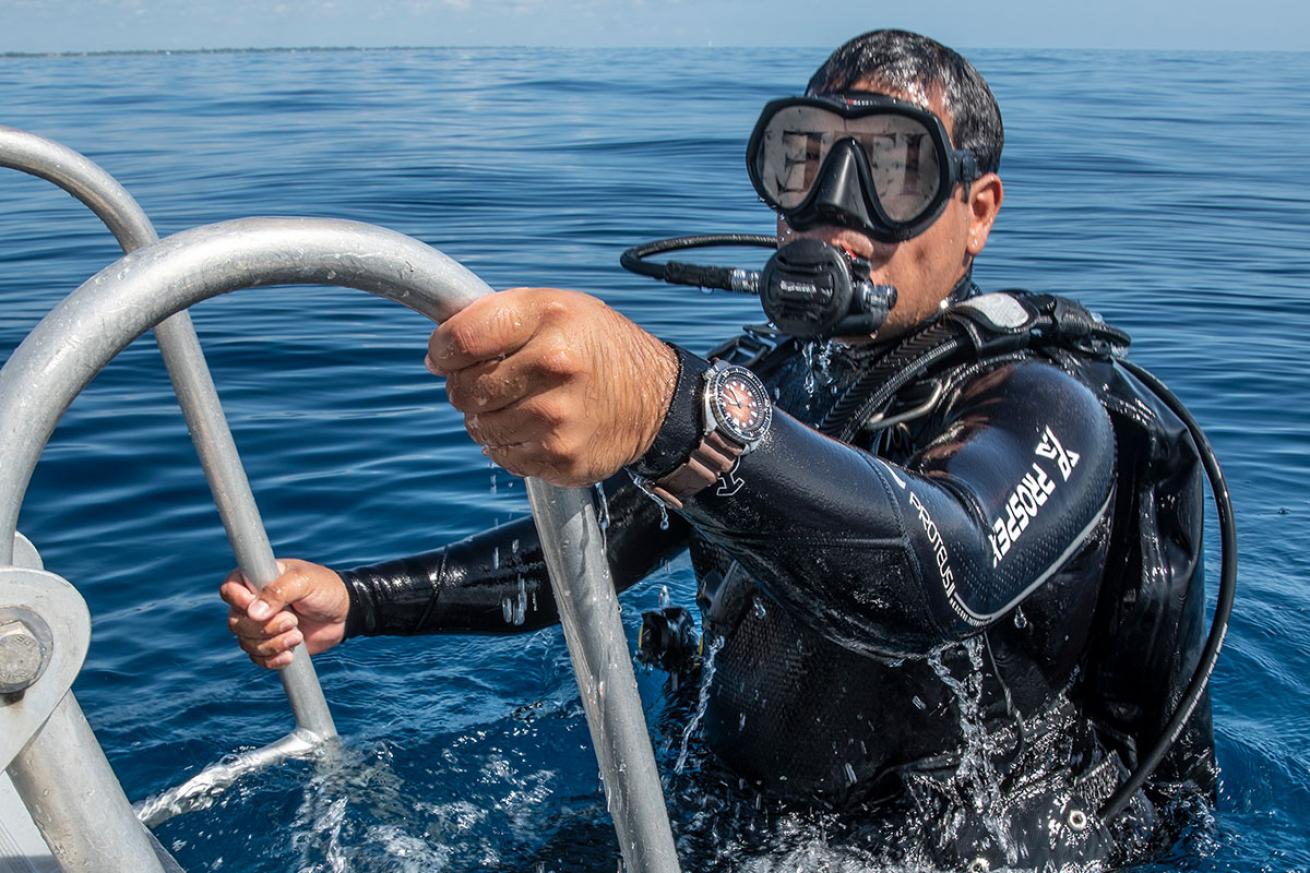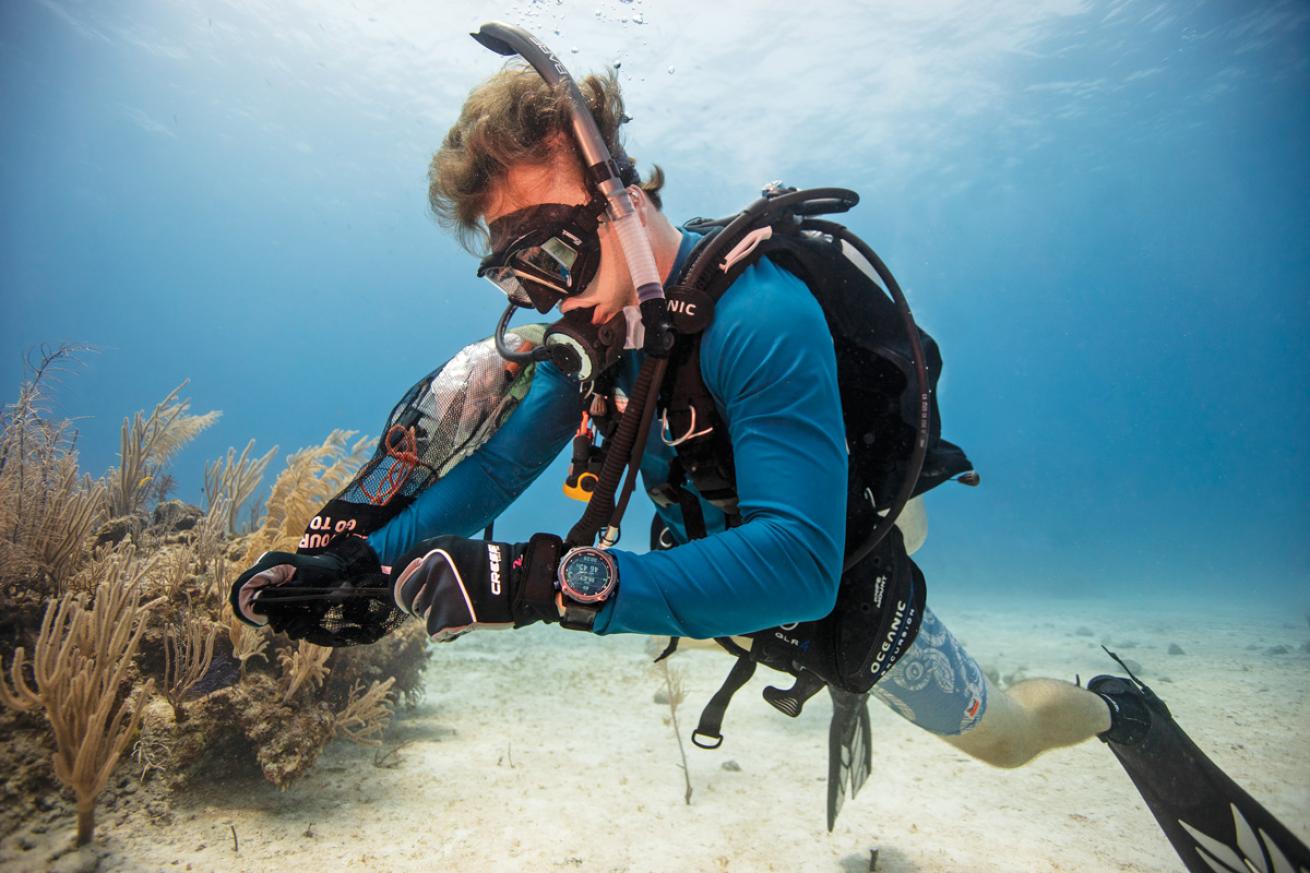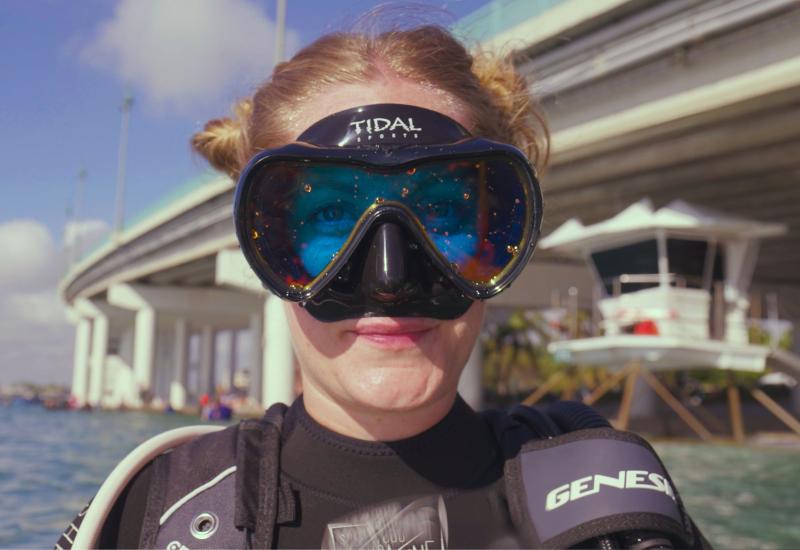How to Take Care of a Dive Watch

Michelle GaylordA diver returns from a dive while sporting a dive watch.
Tips: How to Care for Dive Watches
1. Prep Your Watch Out of the Box
Test out the metal ring or bezel that goes around the face of the watch. The bezel requires some effort to rotate it around the dial. You’ll feel it move against the internal indents as you rotate it. There are usually indentations on the outer edge of the bezel to give you a firm grasp and make it easier to move.
If you like to wear your scuba watch on top of your wetsuit, check to make sure the strap will fit around the wetsuit that you usually wear. If it doesn’t fit, the watch maker might have included extensions to lengthen the strap.
It’s worth reading the manual. Today’s dive watches have a lot of functions that are practical, useful or just downright cool. Reading up on the details of your new watch is the best way to get the most out of it.
2. Rinse After Each Dive
Make sure to thoroughly rinse your dive watch in fresh water after each dive. You should also rinse it after getting out of a pool to remove chlorine.

Scuba Diving MagazineA diver picks up trash while sporting a dive watch.
3. Turn the Bezel
While you are rinsing your dive watch, turn the bezel—if your watch has one—to get rid of any sand, grit, etc. that might have gotten under the dial.
4. Check Gaskets
Scuba diving watches are waterproof thanks to rubber or plastic seals inside the watch. These gaskets will eventually deteriorate and affect the water resistance of your watch. Manufacturers suggest the gaskets be changed and/or inspected anywhere from every 28 to 36 months. If you dive frequently, have the watch pressure-tested and the gaskets changed/ inspected annually.
5. Remove for Sauna or Hot Tub
Extreme changes in temperature might affect the sealing capabilities of your dive watch.
6. Screw or Push Down Crowns Tightly
Make sure the crown is either screwed in or pushed down all the way before getting in the water. Once in the water, don’t adjust the crown as water could accidentally seep in.
7. Avoid Chemicals
Do not expose watches to aerosol sprays, strong chemicals or solvents, which can damage or dry them out.
8. Check for Condensation
If you notice condensation under the crystal, take your watch to a professional immediately.










